Who Would Benefit from this Course?
- Anyone working or wishing to work in the cut flower industry
- Anyone wanting to buy or start a flower farm (small or large)
- People wanting to start a small home based business (It's amazing how you much can supplement an income growing cut flowers in even a small home garden)
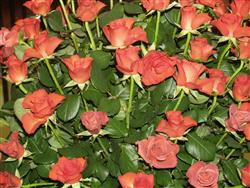 Cut flower production is an expanding industry worldwide. It has a great deal of export potential, and although most flower producing countries meet the domestic requirements of their cut flower markets, the home market potential in many countries could be further developed. Spending on cut flowers is stronger in some countries than others, the average Australian for example spends far less on cut flowers than say, the average German or Frenchman. Many countries import large quantities of flowers; and even some exporters will import flowers at certain times of the year (eg. when varieties are out of season). Germany for example imports most of their cut flower requirements (up to 70%) with The Netherlands being the largest exporter to Germany. Japan and the United States have the largest cut flower markets though requiring almost double that of Germany.
Cut flower production is an expanding industry worldwide. It has a great deal of export potential, and although most flower producing countries meet the domestic requirements of their cut flower markets, the home market potential in many countries could be further developed. Spending on cut flowers is stronger in some countries than others, the average Australian for example spends far less on cut flowers than say, the average German or Frenchman. Many countries import large quantities of flowers; and even some exporters will import flowers at certain times of the year (eg. when varieties are out of season). Germany for example imports most of their cut flower requirements (up to 70%) with The Netherlands being the largest exporter to Germany. Japan and the United States have the largest cut flower markets though requiring almost double that of Germany.
ACS student comment: "I am enjoying my course and
it has given me an understanding of what I need to do once I have
completed my course. I find the course to a valuable learning
experience. I am able to do it in my own time (I have young children)
and the learning is interesting." Melanie Sumpter, Australia, Cut Flower Production course
COURSE STRUCTURE
There are 10 lessons as outlined below:‑
1. Introduction to Cut Flower Production
-
Scope and Nature of the Flower Industry
-
International Flower Market
-
Succeeding in the Trade
-
Flower Structure
-
Development of a Flower
-
Introduction to Hydroponic Culture
-
Understanding plant growth … roots, stems, flowers, leaves
-
Types of flowers; perennials, bulbs.
-
Review of Flower Crops; Alstroemeria, Antirrhinum, Amaryllis, Anigozanthus, Aster Carnation, Chrysanthemum, Dahlia, Freesia, Gerbera, Gladiolus, Iris, Narcissus, Orchids, Rose, Stock and others.
2. Soils and Nutrition
-
Soil composition
-
Soil texture
-
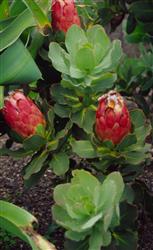
Soil structure
-
Colloids
-
Peds
-
Characteristics of clay, sand and loam soils
-
Naming the Soil
-
Improving Soil Structure
-
Improving fertility
-
Benefits of adding organic matter to soils
-
Soil life … earthworms, mycorrhiza, nitrogen fixing, etc.
-
Soil Water
-
Understanding dynamics of water loss
-
Improving soil water retention
-
Types of soil water (Hygroscopic, Gravitational)
-
Soil analysis
-
Plant tissue analysis for soil management
-
Measuring pH
-
Other soil testing (testing salinity, colorimetry, etc)
-
Measuring Water availability to plants
-
Soil Degradation and rehabilitation (Erosion, Salinity, Acidification, etc)
-
Soil Chemical Characteristics
-
Nutrient availability and pH
-
The nutrient elements; major, minor, total salts
-
Diagnosing nutritional problems
-
Fertilisers (types, application, etc)
-
Natural Fertilisers
-
Fertiliser Selection
-
Composting methods
-
Soil mixes and potting media
3. Cultural Practices
-
Site selection
-
Production
-
Cultivation techniques
-
Using cover crops
-
Green manure cover crops
-
Nitrogen Fixation in legumes
-
Crop rotation
-
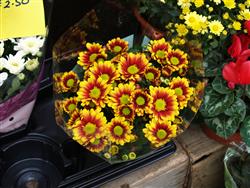
Planting procedure
-
Staking
-
Bare rooted plants
-
Time of planting
-
Mulching
-
Frost protection
-
Managing sun
-
Managing animal pests; birds, etc.
-
Pruning
-
Water management and Irrigation
-
When to irrigate
-
Period of watering; cyclic watering, pulse watering, etc
-
Sprinkler irrigation
-
Trickle irrigation
-
Sprinkler systems; portable, permanent, semi permanent, traveling
-
Types of sprinkler heads
-
Sprinkler spacing
-
Selecting surface irrigation methods
-
Weed control
-
Preventative weed management
-
Hand weeding
-
Mechanical weeding
-
Chemical weed control
-
Classification of weedicides
-
Natural Weed Control Methods
-
Review of common weeds
4. Flower Initiation and Development
-
How flowers Age
-
Managing flower longevity
-
Effects of Carbon Dioxide
-
Getting plants to flower out of season
-
Types of flower response to temperature
-
Ways to cause controlled flowering
-
Narcissus flower management
-
Managing Azalea flowering
-
Seed sources
-
Hydroponics for controlled growth
5. Pest and Disease Control
-
Integrated Pest Management
-
Chemical Methods of Pest Control
-
Chemical labels
-
Non Chemical methods of pest control
-
Pest and Disease Identification and Management on flower crops
-
Anthracnose
-
Blight
-
Canker
-
Damping off
-
Galls
-
Leaf Spot
-
Mildew
-
Rots
-
Rust
-
Smut
-
Sooty Mould
-
Virus
-
Wilt
-
Caterpillars
-
Leaf hoppers
-
Mealy Bugs
-
Millipedes
-
Mites
-
Nematodes
-
Scale
-
Slugs or Snails
-
Thrip
-
Whitefly
-
Viruses,
-
Others
-
Environmental Problems
6. Australian Natives and Related Plants
7. Greenhouse Culture
-
The greenhouse business
-
Greenhouse system
-
Components of a greenhouse
-
What can be grown in a greenhouse?
-
Siting greenhouses
-
Types of greenhouses
-
Shade houses
-
Cold frames
-
Heated propagators
-
Framing and cover materials
-
Thermal screens
-
Wind breaks
-
Benches and beds
-
Environmental control; Temperature, moisture, irrigation, shading -both natural and with blinds/curtains, light-including supplemented light if needed, ventilation, levels of CO2, mist/fogging
-
Photosynthesis
-
Plants that respond to Carbon dioxide
-
Day length manipulation
-
Lighting and heating equipment
-
Horticultural management within the greenhouse
8. Harvest and Post Harvest
-
Harvesting
-
Flower deterioration
-
Post harvest
-
Shelf life
-
Major factors that affect shelf life
-
Post harvest treatments
-
Other treatments
-
Grading standards
-
Conditioning flowers for market
-
Harvesting and grading carnations
-
Harvest and post harvest of selected orchids; Bud opening, transport, storing flowers
-
Cost Efficiency Standards
-
Quality Standards
-
Quantity Standards
-
Judging flowers
9. Developing a Production Plan
10. Export Marketing
- International flower marketing system
- Aspects of export
- Flower Exporting case study
- Understanding marketing your produce
- Consider your markets
- Market research
- What to research
- How to sell successfully
Each lesson culminates in an assignment which is submitted to the school, marked by the school's tutors and returned to you with any relevant suggestions, comments, and if necessary, extra reading.
AIMS
On successful completion of the course you should be able to do the following:
- Explain the physiological processes which affect flower development in plants.
- Identify plant varieties suitable for commercial cut flower production.
- Evaluate the suitability of different plants as cut flower crops.
- Determine soil and nutrition requirements for cut flower growing.
- Determine the cultural requirements for commercial production of a cut flower crop.
- Determine harvest and post-harvest management practices for cut flower crops.
- Develop a production plan for a cut flower crop.
- Determine export market opportunities for cut flowers.
WHAT THE COURSE COVERS
Here are just some of the things you will be doing:
- Describe the botanical mechanisms involved in the process of flower initiation for different plant genera.
- Explain the effect of carbon dioxide enrichment on flowering for a specified plant species.
- Determine the factors causing aging of flowers in different genera of commercially grown cut flowers.
- Compare different treatments to preserve cut flowers after harvest, including: *Glycerine *Drying *Pressing.
- Determine procedures to produce cut flowers out of season.
- Compile a resource file of different sources of information regarding commercial cut flower varieties, including: *Publications *Suppliers of seed and/or planting stock *Industry associations *Relevant government contacts.
- Describe herbaceous perennials, annuals, biennials, bulbs, corms, rhizomes or tubers suitable to cut flower growing in a specific locality.
- Describe plant varieties commonly used as fillers in the floristry trade.
- Differentiate between different plant varieties suitable as cut flowers, including: *Family, genus, species & variety name (if applicable) *a description of the physical characteristics of the plant *a flower description, flowering season and length of flowering.
- Develop criteria for the selection of plant varieties to be grown as cut flower crops on a specified property.
- Determine a range of different plants with potential as a cut flower crop in a specific locality.
- Explain the success of specified plant varieties as cut flowers.
- Describe different plant varieties suited to grow as cut flowers, including; Family, genus, species and variety name (if applicable) a description of the physical characteristics of the plant *flower description, flowering season and length of flowering.
- Analyse the commercial viability of different cut flower crops being produced in a specified situation.
- Perform simple tests on different soils to determine: *Soil type *pH *Drainage *Water holding capacity.
- Compare the performance of a specified variety of cut flower in different soil types.
- Determine appropriate cut flower crops to grow in different types of soils from your region.
- Recommend soil preparation techniques for a specific site, for a specified cut flower crop.
- Compare the suitability of different types of fertilisers for use with different cut flowers.
- Analyse the nutritional management being practiced by different growers, on specified cut flower crops.
- Identify nutrient disorders on different cut flowers.
- Explain the results of a plant tissue analysis to provide fertilizing recommendations.
- Compare plant establishment techniques for five different cut flowers, including planting and staking.
- Explain the applications for different types of irrigation system, for cut flower production, on sites you visit.
- Differentiate between greenhouse and open field growing of a specified cut flower crop, grown in a specific locality.
- Develop guidelines for the pruning of different flower crops.
- Determine common pest and disease problems, on specified cut flower crops, in your locality.
- Prepare pest and disease management plans, for different cut flower crops.
- Compare commercially available propagation methods for different species of cut flowers.
- Evaluate the use of different water sources for use on a specific cut flower crop.
- Develop an integrated pest management program for a specific cut flower crop.
- Describe common harvesting techniques for cut flowers.
- Compare alternative post-harvest storage facilities for cut flowers.
- Explain the commercial grading procedures for different types of cut flowers.
- Inspect and determine the quality of five different cut flowers, using a standard judging system.
- Describe methods to extend cut flower life during storage and transport.
- Evaluate the market value of different specified cut flower crops.
- Determine cut flower crops with commercial potential in your locality.
- Describe appropriate post-harvest techniques for a selected flower crop.
- Determine factors which effect the marketability of a selected flower crop.
- Describe appropriate marketing methods for a selected flower crop.
- Prepare a management plan, including: *materials and equipment lists *schedules of crop husbandry tasks *estimates of production costs *marketing strategies *contingency plans, for three selected flower crops.
- Describe the production requirements for exporting cut flowers to a specified country.
- Describe the market requirements for cut flower exporting to a specific country.
- Analyse the current export market for cut flowers, including; *quantities and types of flowers being exported *where cut flowers are being exported to *prices growers are obtaining *trends in the market.
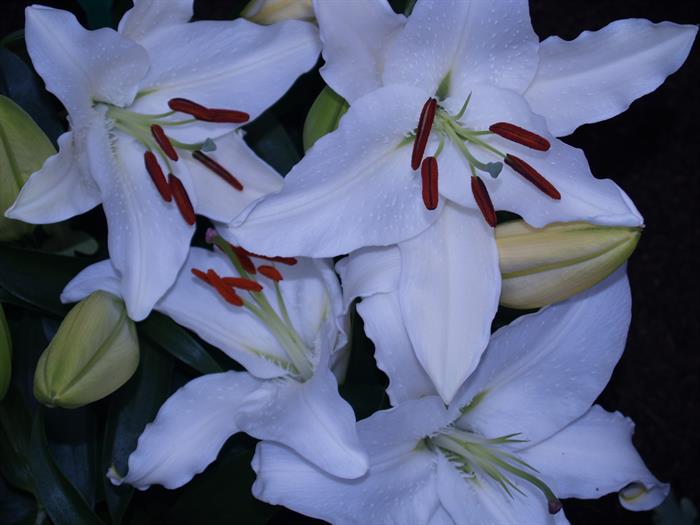
Understanding How a Flower Deteriorates, can Help You better manage Harvest and Post Harvest
When a flower is harvested, it begins to deteriorate. The rate of deterioration can vary greatly, according to the type of flower, its condition upon harvest, the way it is treated, and the environmental conditions under which it is stored.
The relative importance of these different factors will vary from one variety of plant to another.
-
Type of flower Orchids, for example, may last for 6 weeks or more as a cut flower, proteas can also last a number of weeks, but many herbaceous plants such as chrysanthemums, dahlias or stock may not last a week.
-
Condition at harvest If the flower, stem or foliage is damaged the flower can deteriorate faster.
-
Treatment Certain treatments may prolong the life of the flower (eg. adding sugar or certain chemicals to water which flowers stand in), protecting from exposure to wind, heat or other adverse environmental conditions.
-
Environment Physiological processes continue to function after a flower is cut (eg. The plant continues respiration). These processes can be slowed (eg. by lowering temperature or changing composition of gases in the air). By slowing physiological processes, the rate of deterioration can often be slowed. However the natural processes of senescence will still occur eventually. Some flowers die faster than others due to their chemical and internal physiological makeup.
- Genetics The longevity of flowers is genetically influenced and varies greatly amongst different cultivars of the same species. These differences in longevity correlate with stem diameter and rigidity. Thicker stems are less likely to bend or break and contain more respiratory substrates for the flowers hence prolonging their vase life.
-
Anatomy and Physiology This also exerts an effect. For example, a cultivar that produces more ethylene will age faster than one that doesn’t. A plant’s anatomy and physiology are influenced in turn by a number of environmental and technical factors as illustrated in the table below.
-
Light Light intensity directly influences the efficiency of photosynthesis and hence the carbohydrate content of plants. Flowers with high carbohydrate (especially mobile sugars) content will last longer when cut. Cooler temperatures, low light intensity and shorter periods of light reduce the life of cut flowers.
-
Temperature Excessively high temperature during cultivation will reduce cut flower life. High temperatures increase rate of use of carbohydrates and rapid water loss from the plant.
-
Humidity High humidity is required for optimal flower production in some species, e.g. roses, since it reduces transpiration (and hence stress) and the occurrence of pests such as red spider mite. However, high levels of humidity can increase the growth of bacterial diseases such as grey mould and downy mildew. Ventilation is necessary to reduce these effects and also to reduce ethylene in the atmosphere.
- Stage of Flower Development Generally speaking flowers cut at a more advanced stage of development will not last as long as younger ones.
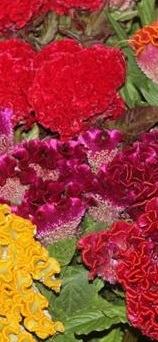
Duration: 100 hours
Improve Your Career or Business Prospects
Learn about the variety of plants that can be grown, the characteristics
of each that relate to cut flower production, and how to grow, harvest
and market them.
Cut flower growing has experienced rapid expansion in recent decades,
resulting in increased demand for training in the skills and knowledge
required by this industry in increasingly affluent countries.
This course provides a thorough basic training for the commercial cut flower grower or their employees.
This is an industry that has grown with world economic growth; and
international demand continues to explode as new countries become
increasingly affluent.
Who Would Benefit from this Course?
- Anyone working or wishing to work in the cut flower industry
- Anyone wanting to buy or start a flower farm (small or large)
- People wanting to start a small home based business (It's
amazing how you much can supplement an income growing cut flowers
in even a small home garden)